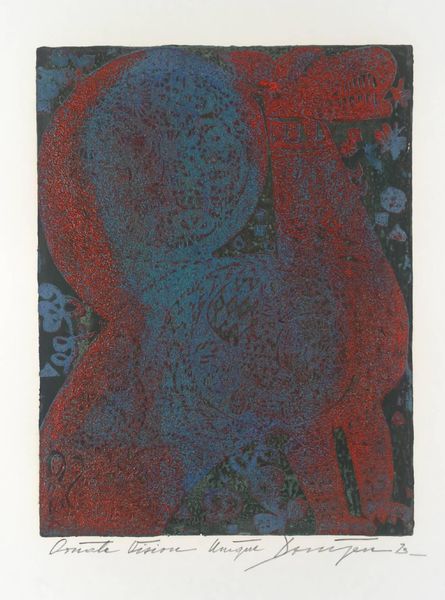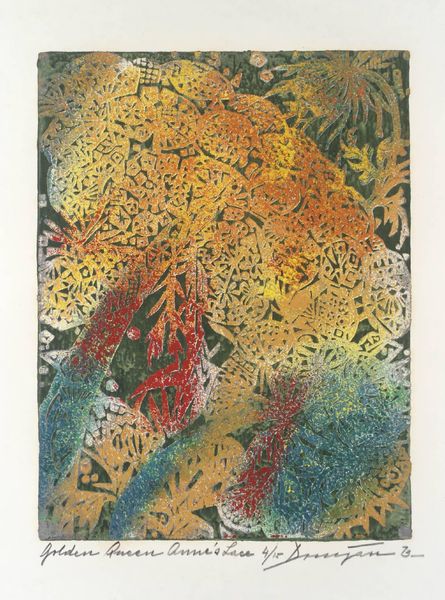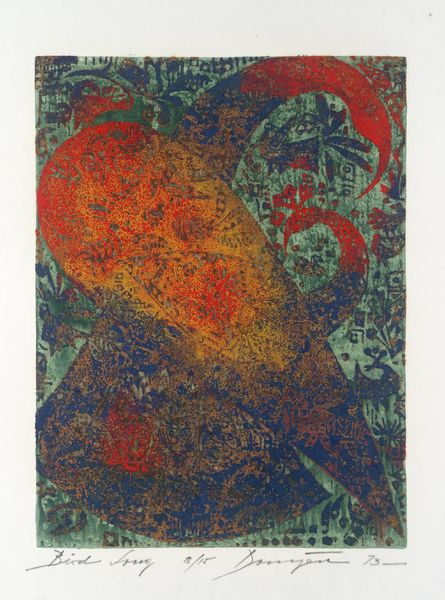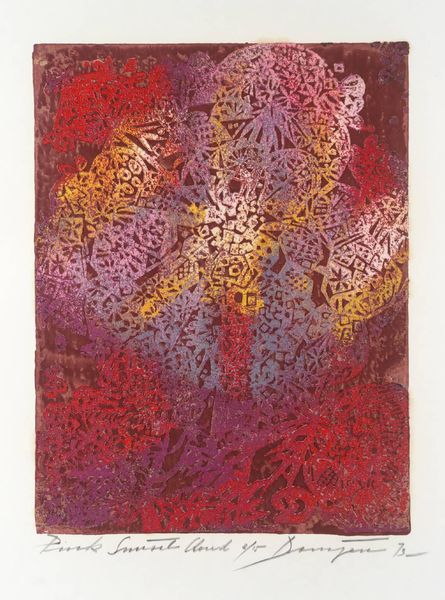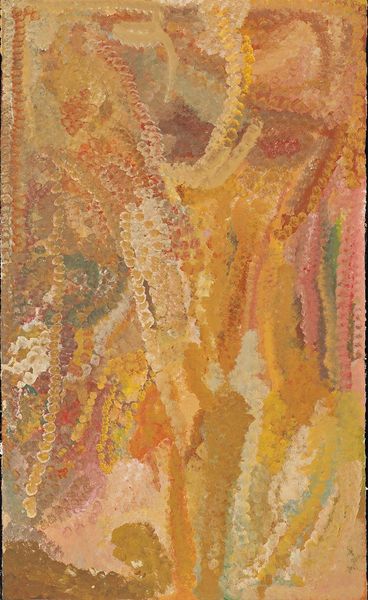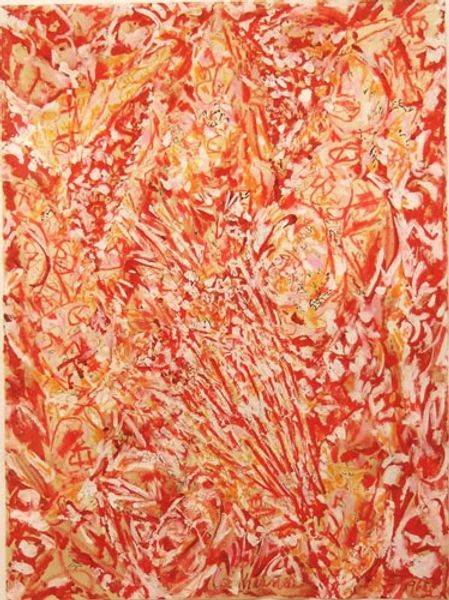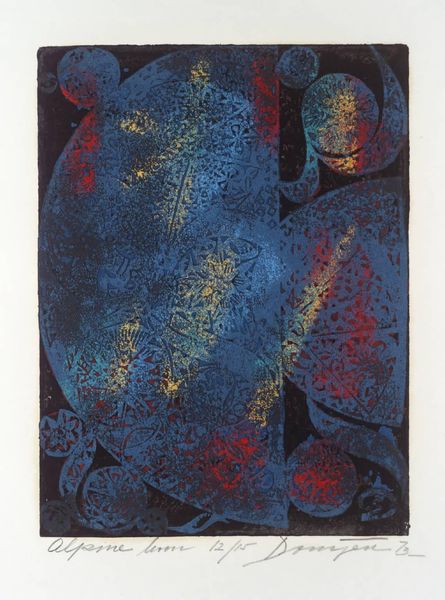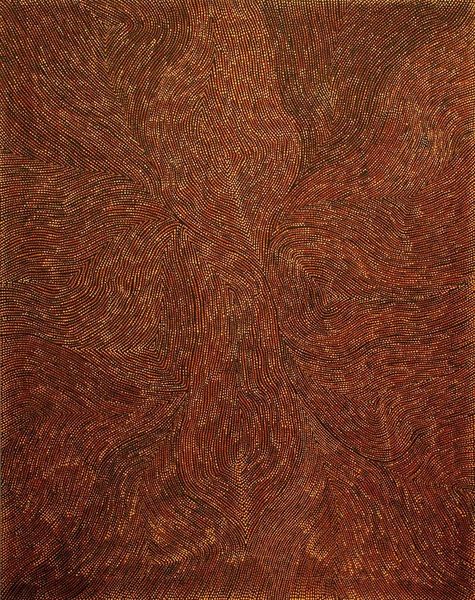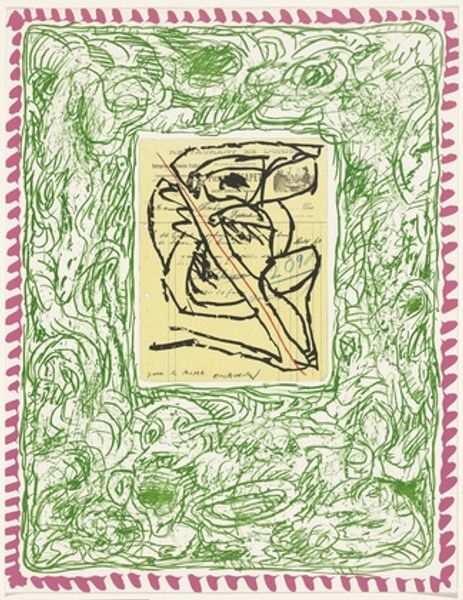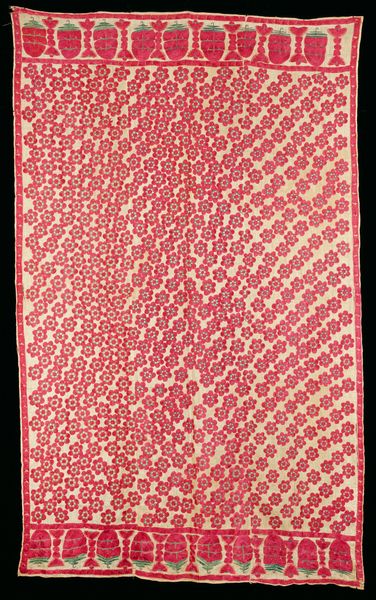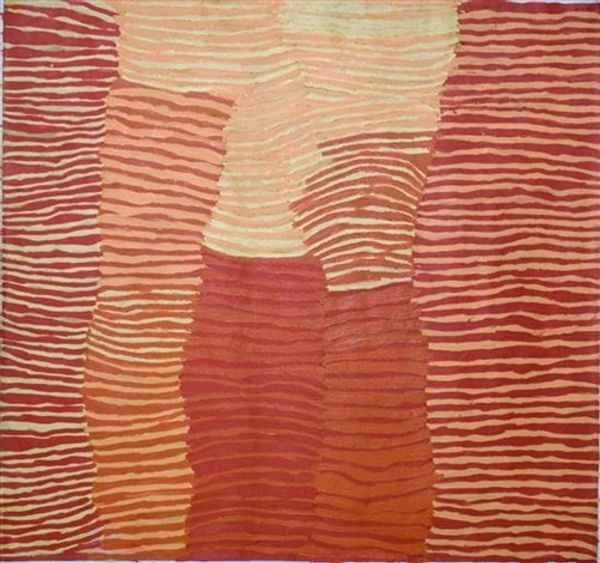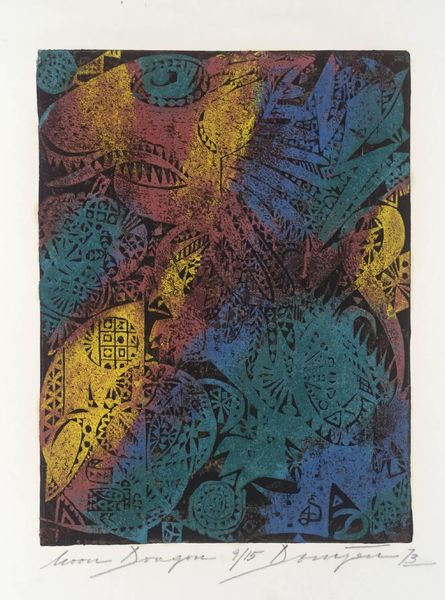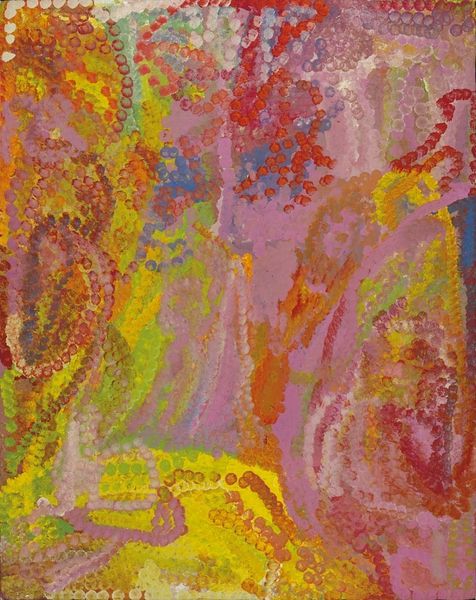
painting, acrylic-paint
#
naturalistic pattern
#
contemporary
#
organic
#
painting
#
acrylic-paint
#
geometric pattern
#
abstract pattern
#
organic pattern
#
flower pattern
#
abstraction
#
intricate pattern
#
pattern repetition
#
layered pattern
#
pattern in nature
#
combined pattern
Copyright: Emily Kame Kngwarreye,Fair Use
Curator: Here we have Emily Kame Kngwarreye's "Fertile Desert," painted in 1992 using acrylic on canvas. Editor: The immediate impression is of radiant heat. A sort of pulsating field of red and yellow dots—an energetic surface. Curator: Indeed. Kngwarreye, despite only taking up painting in her late seventies, became a major figure in contemporary Indigenous Australian art. The piece reflects her deep connection to the land and its cycles, moving away from rigid patterning. Editor: The texture achieved with the dotting technique is really quite something. See how it varies in density, creating areas of greater and lesser intensity? It almost vibrates, suggesting the desert's hidden life force. Curator: Her work arose from traditions like ceremonial body painting and batik dying but gained renown as Aboriginal art gained recognition internationally, with a shift toward the more intuitive approach she is famous for. Notice that her work often reflects seasonal changes after the rains. Editor: Fascinating to consider this intricate network of marks, this topography of dots as a metaphorical landscape—a micro- and macrocosm contained on canvas. The slight imperfections are key; they give it such an organic, non-formulaic presence. Curator: Yes, her legacy really challenges established notions of Indigenous art, propelling it into the contemporary art market and pushing its conceptual boundaries. Kngwarreye helped demonstrate that Aboriginal art was about more than strict traditionalism. Editor: So, in a way, "Fertile Desert" is also a map. It directs us to the dynamic relationship of land and life, expertly rendered in a pointillist approach using bold color and variable patterns. Curator: Yes, it reframes Aboriginal artistic practice in global dialogues. A beautiful example of the way the socio-political context of the time propelled the recognition of unique traditions into international discourses. Editor: It certainly lingers in the mind. This is art which reminds us of what we have yet to notice in the world.
Comments
No comments
Be the first to comment and join the conversation on the ultimate creative platform.
